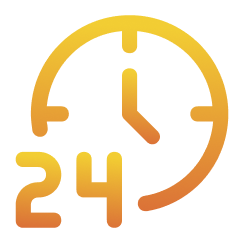Switching to a new thermostat is often one of the easiest ways of improving energy efficiency in your home. In many modern houses, hooking up a new thermostat is a simple DIY project. [Company_name] in Downers Grove, IL, is happy to help you to connect your new thermostat to your air conditioner, but we offer these instructions for all of the steps you need to follow.
1. Read the Instructions for Your Thermostat
Every thermostat follows the same basic connection method, but there are some distinct differences between various models. To learn more about your model, read the manufacturer’s instructions. This should guide you through the connection process and tell you more about your thermostat’s unique features.
2. Turn Off Power to Your AC and Thermostat
Before even removing the old thermostat, the first thing you should do is make sure the power is off in all affected devices. This will prevent dangerous shocks or potential damage to the system. Flip your breakers to turn off power to the affected areas, or completely shut off power to the house if you can’t find the right circuit. To make sure the power is off, test with a multimeter before removing the old thermostat.
3. Identify All Necessary Wires
Take a look at the wires behind your old thermostat and figure out which one is which. Most modern thermostats will need the common wire, or c-wire, to power the device. Even if your old thermostat didn’t use this wire, it might be tucked behind the wall. You’ll also need to locate the wires that connect the thermostat to the compressor, fan, and other parts of the HVAC system. Almost all modern wiring systems use a color code system to identify wires.
- White: This connects the thermostat to your heat system.
- Red (H): Some systems use a red wire with an H label for the heating system.
- Red (C): This hooks up the thermostat to the cooling system.
- Blue: The blue wire is the common or c-wire to power the thermostat itself.
- Yellow: Use this to connect the thermostat to your compressor.
- Green: Green hooks up to the fan.
- Orange: If you use a heat pump system, orange connects the thermostat to the pump.
4. Install the Thermostat Plate
Most thermostats will come with a plate. You need to attach this firmly into place so that the thermostat will not fall off the wall. Make sure it’s level because some thermostats may not work if they’re crooked. Pull all of the wires through the plate, and then secure it in place with screws or anchors.
5. Connect the Wires
Hook up each wire on the thermostat to its corresponding wire on the wall. Line up the exposed parts of the wire together, and then twist the electrical cap in place over the ends to connect them. If your wires all match industry color codes, this process is simple. Figuring out which wire connects to which thermostat wire may be trickier if your wall has unusual wiring, though.
6. Mount the Thermostat and Test Your System
The final step is the easiest part of connecting the thermostat to your cooling system. All you have to do is mount the thermostat onto its backing plate. For most models, this just involves clicking or twisting the thermostat into place. Then, you can turn the power back on and test your system. Make sure the AC clicks on when it’s supposed to, and ensure your thermostat is properly reading the room temperature.
Know When to Get Professional Help
It’s possible to connect a new thermostat yourself when you already have all of the proper wires installed in the right place. However, things get trickier if you have an older connection style that doesn’t have the correct wires for your new thermostat or follow the industry-standard color codes. The typical homeowner will also be unable to connect the thermostat to the AC unit if they want to install it in an entirely new location. Working with electricity requires a lot of knowledge and expertise, so don’t hesitate to ask for help. A trained HVAC professional can make sure everything is safely and properly connected.
[Company_name] is happy to assist with installing new thermostats and doing other electrical work for your HVAC system. We also help Downers Grove residents with a variety of other services, including installations, repairs, and maintenance on heating and cooling systems. If you’d like to learn more about our many services, give us a call today.

